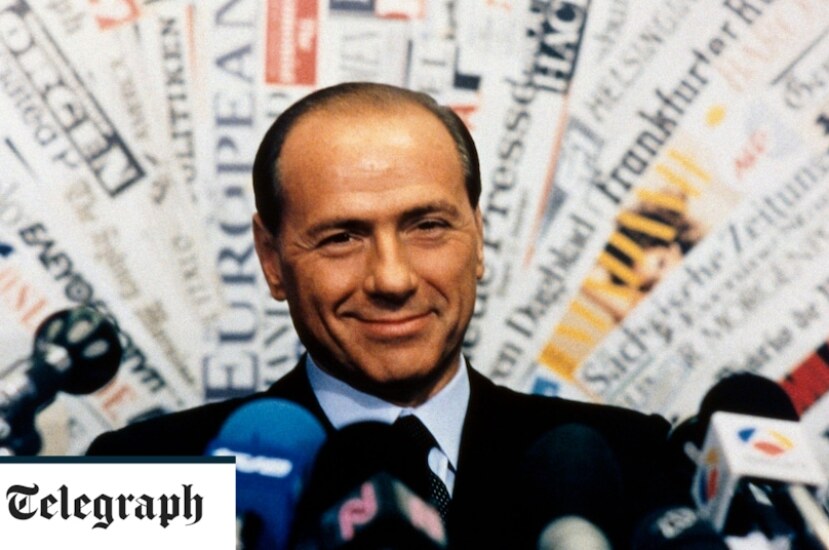The most flagrant practitioner of the “Tangenti” Italian political-favours system was Bettino Craxi, head of the Socialist Party, prime minister from 1983 to 1987 – and best man at Berlusconi’s wedding to his second wife, the film star Veronica Lario, and godfather to two of his children. It was Craxi who provided the means for Berlusconi’s rise to the top of the wealth league.
In 1984 Berlusconi bought a television channel called Rete 4, establishing a near-monopoly of commercial television. To get round laws protecting the powerful state monopoly, he sent tapes to regional stations to be broadcast simultaneously – and illegally.
Two months later there was a showdown. The courts ordered a partial blocking-out of Berlusconi’s network. Berlusconi responded with outrage at this infringement of the citizen’s inalienable “liberta di telecommando” (“right to use the zapper”). Within four days, Craxi issued a decree law overturning the court’s ruling and creating a broadcasting duopoly. The Italian public was rewarded with Dallas, Dynasty and showgirls.
By 1986 Berlusconi had captured three national television channels: Canale 5, Italia 1 and Rete 4. He bought AC Milan in 1986, and won control of the Mondadori publishing house in 1990. His domination of the Italian broadcasting media earned him the quasi-papal sobriquet “Sua Emittenza” – “his transmitting-ship”.
Craxi later fled to Tunisia, pursued by corruption charges and reportedly with between $6 million and $10 million acquired from Berlusconi. However, with the fall of his mentor, Berlusconi lost his link to state-owned banks and was faced with debts of $3 billion and a judicial investigation into Fininvest, his holding company. His empire was wobbling, and the Left was regrouping.
There was only one thing for it: Giuliano Ferrara, editor of the newspaper Il Foglio and a close friend of Berlusconi’s, recalled getting a telephone call from him during the run-up to the 1994 general election: “We could make a party,” Berlusconi told him. “We have to do something or they will destroy everything we have built up.”
For public consumption, Berlusconi’s reasoning was rather different. He was putting himself forward, he declared selflessly, “out of love for Italy, to save it from the Left, which is built around the former Communist Party”. On another occasion he claimed: “I don’t need to go into office for the power. I have houses all over the world, stupendous boats … beautiful airplanes, a beautiful wife, a beautiful family … I am making a sacrifice.”
Berlusconi’s Forza Italia was as much a populist movement as a political party, having no clear programme or ideology. He used his corps of advertising salespeople as local organisers, and his photograph dominated the campaign. Football metaphors were a major theme of his publicity. Forza Italia, he said would not be red (Communist) or black (Fascist), but blue, the colour of the national football team’s shirts.






Leave a comment